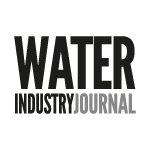New guidance is focused on detecting microplastics in the water supply and ultimately protect consumers from the associated risks.
The announcement comes as UK waterways have been found to contain alarming levels of microplastics.
Water quality. Sampling – Part 27. Guidance on sampling for microplastics in water (ISO 5667-27), is published by BSI in its role as the UK national standards body.
It offers comprehensive guidance on accurately assessing microplastic pollution in domestic water, freshwater, seawater, treated wastewater, and untreated wastewater.
With microplastic pollution becoming an urgent issue, ISO 5667-27 helps organisations, researchers, and environmental agencies to enhance environmental monitoring, policy development, and water treatment processes.
The standard is designed to ensure collection of consistent, reliable, and comparable data, supporting decision-making in water treatment and sustainability efforts across sectors. It can also help track trends in pollution, fostering long-term solutions.
David Fatscher, Head of Standards Development at BSI, said: “The publication of ISO 5667-27 marks a significant milestone in the global effort to understand and mitigate the growing threat of microplastic pollution.
“This standard aims to help organisations worldwide produce consistent, reliable data that is critical for shaping effective policies and interventions.
“Ultimately, it’s an opportunity to foster greater trust, resilience and accountability in tackling one of the most pressing environmental challenges of our time.”
The guidance looks at:
Improved Accuracy & Reliability: Minimise inconsistencies in sampling and contamination, leading to reliable data on microplastic sources and concentrations.
Long-Term Environmental Monitoring: Enable researchers and policymakers to track microplastic trends and assess the effectiveness of interventions.
Consistency & Comparability: Standardised methods allow better collaboration between organisations, fostering a unified global approach to tackling microplastic pollution.
Efficient Resource Use: Streamlined sampling techniques save time and reduce unnecessary duplication of efforts.




